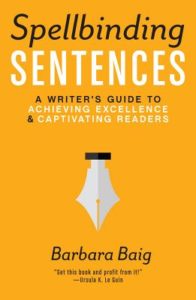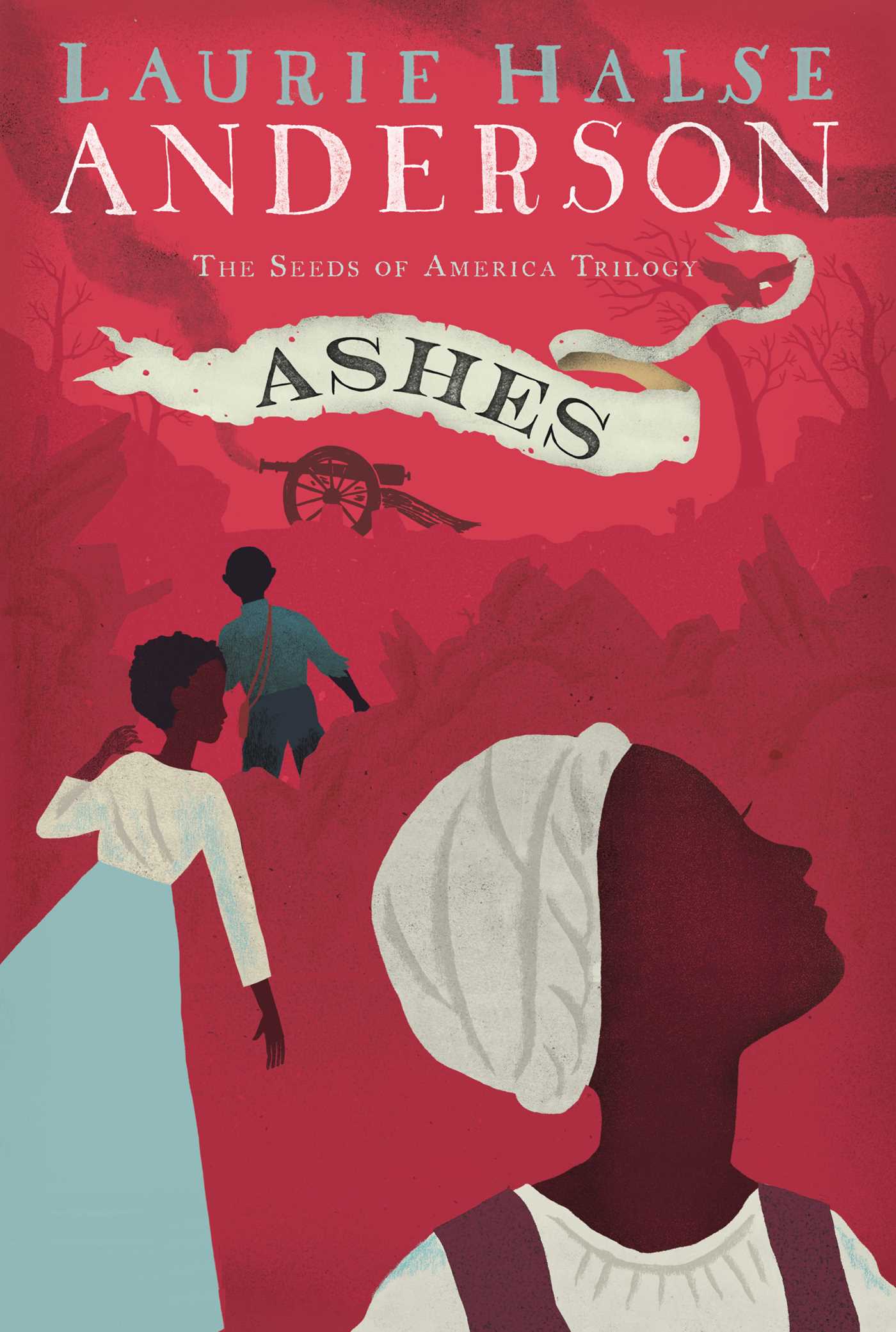craft review by Anne-Marie Strohman

Ashes by Laurie Halse Anderson (Atheneum/Caitlyn Dlouhy Books, 2016)
Writing, at its core, is about choosing the right words. Those choices connect to a character in a first-person narrative. In Laurie Halse Anderson’s Ashes, the final book in her Seeds of America trilogy, Isabel Gardener tells the story in a voice that is hers and only hers.
Readers first met Isabel, a young enslaved American, in Chains, a National Book Award finalist and winner of the Scott O’Dell Award for Historical Fiction. After a shift to her companion Curzon’s narrative in Forge, Isabel’s first-person narrative returns in Ashes. Isabel narrates her search for her sister Ruth and for her freedom, carefully navigating the countryside, the warfield, and her relationships with Ruth and Curzon.
Anderson creates a distinctive vocabulary for Isabel, one that develops in the course of the novel. Examining her strategy can help us as writers to develop our own characters’ unique voices.
Making a list
 In Spellbinding Sentences, long-time writing teacher Barbara Baig suggests an exercise to capture the right words for a character. Imagine one of your character speaking. Then write down all the words that character might have in his or her vocabulary. Think about subjects the character will be knowledgeable about, appropriate slang or colloquial speech, and age. You can do this exercise multiple times for different areas of the character’s experience.
In Spellbinding Sentences, long-time writing teacher Barbara Baig suggests an exercise to capture the right words for a character. Imagine one of your character speaking. Then write down all the words that character might have in his or her vocabulary. Think about subjects the character will be knowledgeable about, appropriate slang or colloquial speech, and age. You can do this exercise multiple times for different areas of the character’s experience.
To see the process in reverse, you can create a list of out-of-the-ordinary words a character says (in speech or in first-person narration). The following list from Ashes contains slang, army terms, farming terms, and unusual turns of phrase:
nattered, confuddled, lasses, “sat uncommon still,” contrary, regiments, poppet (her pet name for Ruth), “the column of soldiers caterpillaring down the road,” “mebbe” (in speech), muskets, swords, cartridge boxes, “women and children, near one hundred by my count,” sacrifice, freedom, gigantical, “the facts mathematical,” jolting, “toads in my belly,” brainpan, “his arm was still sling-bound,” torn asunder, fantastical, “truth be told,” romantical sentiments, prickly, squatted, gob, looby/loobies, overlong, haversack, mayhaps, lest, confab, tarry, offal, privy trenches, conversating, tasks, chores, “muzzy-headed blatherskite,” addlepated, lobsterback, sutler, poultice.
Action: Create a vocabulary for your character based on subjects they know, colloquial speech, age, etc. Study a favorite character’s vocabulary by jotting down key words.
Providing a reason for including words
Isabel’s literacy provides a context for much of her speech. Especially in Chains and Forge, her knowledge of events and subjects depends on her sneaking to read newspapers and other documents. While Isabel doesn’t read much in Ashes, her literacy informs her word choices.
Isabel’s background as a farm worker and her connection with the natural world shows up in her metaphors. She describes soldiers lowering a blanket with Curzon on it “moving slow, as if everyone were trapped in honey” (246). She says the men “trooped off to snore like fat bears in their tents” (267). And in a scene where she and Curzon discuss their future together, she relates that “my heart was pounding louder than wild horses” (273).
Isabel’s knowledge of war and war strategy is expansive, and it shows up in her vocabulary (see the list above). We know she has been listening to war talk at the highest levels during her enslavement to Bellingham in Forge, and her time in the encampments of Valley Forge and Yorktown further that knowledge.
Action: Consider the vocabulary you use and whether there is a clear reason why the character would use those particular words. Use language and metaphors that reflect the character’s life experience.
Leaving words out
Isabel’s vocabulary has its limitations. Anderson uses these moments to subtly define terms for readers, or to explain a situation to the reader more clearly than a single word could.
For instance, at the Yorktown battlefield, Isabel and Ruth encounter a triage tent. Here’s how she describes it: “We stopped first at the American hospital tent. It was not so much a hospital as it was a place to treat the worst of an injury” (243). Young readers might not know the word “triage,” so Isabel’s explanation is more clear. The description allows Isabel to be specific without relying on a technical word outside of her knowledge base.
When Isabel describes “a regiment of Scotsmen dressed in their strange plaid skirts called kilts” (257), the reader gets the term and definition in a sentence that also expresses how unfamiliar and strange Isabel finds their dress.
Action: Consider what words would be outside of your character’s vocabulary. Use descriptions instead.
Incorporating Words through Story
As Isabel makes her way through the story, her vocabulary grows. In one particular instance, Anderson draws attention to Isabel’s vocabulary acquisition. In the scene, the soldiers are retelling Curzon’s heroic act of diving at three soldiers who were about to be hit by a shell. Isabel responds:
“But how could a shell cause such harm?” I asked.
The men stared at me with astonished mortification.
“Beg pardon?” Henry said. “Do you not know what a shell is, missus?”
“I’ve held them in my hands, of course,” I said. “The sea casts up all manner of shells; they can be fashioned into buttons–”
The fellows exploded into such loud laughter, it fair made the ground shake beneath. Indeed, a few laughed so hard that tears came to their eyes.
“Armies cast up much deadlier shells, Country,” Curzon explained gently. “Mortar shells. Hollow iron balls packed with gunpowder and fired from cannons. A cannonball will kill a lad by taking off his leg or head. But the explosion of a shell can injure many, even kill them.”
The scene defines the term for the reader clearly. But it does more. The scene reminds us that Isabel was raised in Rhode Island, a state with extensive coastline. It also recalls shell buttons that Isabel encounters earlier in the story. Curzon’s attitude toward Isabel shines through in his gentle explanation. Later in the story the term “shells,” sometimes expanded to “explosive shells,” carries with it the serious weight of its meaning.
Action: Use the definition of a key term as a part of your story arc or character development. Make your words do double duty.
Vocabulary as Voice
Ultimately vocabulary creates voice. In a first-person narrative, the words used comprise the voice of the main character. Paying attention to the character’s vocabulary on a granular level can make the difference between ho-hum and powerful.
Anne-Marie Strohman (co-editor) writes picture books, middle grade novels, and young adult short stories and novels. She is trained as a teacher, an editor, and a scholar, specializing in Renaissance Literature. She holds an MFA in Writing for Children and Young Adults from Vermont College of Fine Arts and is an active member of SCBWI. Find her at amstrohman.com and on Twitter @amstrwriter.

COMMENTs:
0